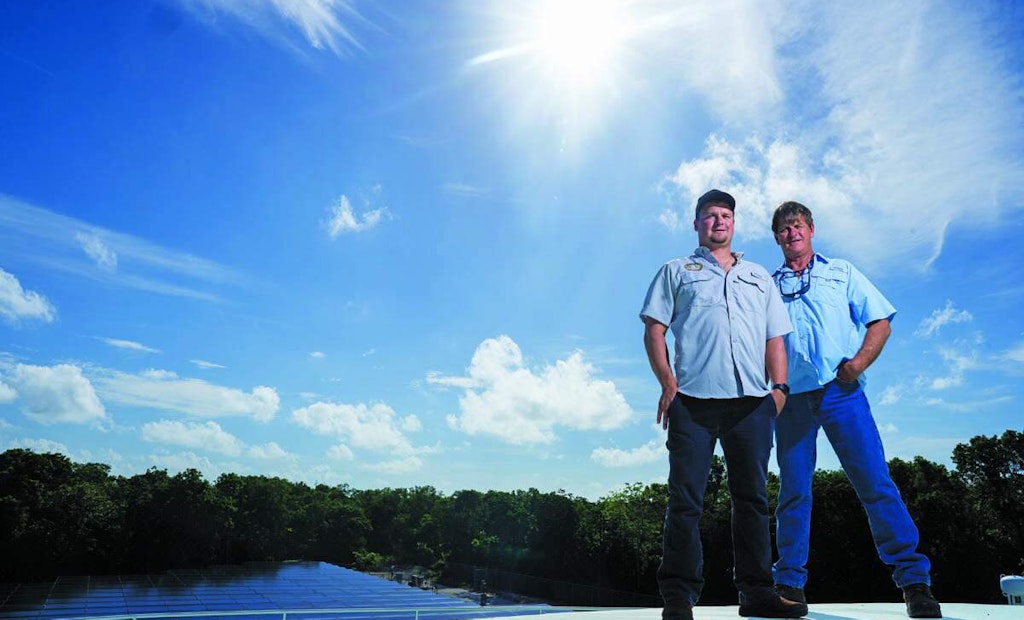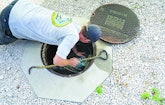
Plant Operations and Facilities Manager Ryan Dempsey (left) and Field Operations Manager Mike Dempsey of the Key Largo Wastewater Treatment District inspect some of the newer sewage pumps at a facility in Key Largo. (Photography by Steven Martine)
To many people, the Florida Keys are paradise, the subject of Hemingway novels and love songs. But to those responsible for maintaining the environmental sustainability of their thriving waters, every day is a fine balancing act.
When the Key Largo Wastewater Treatment District...








